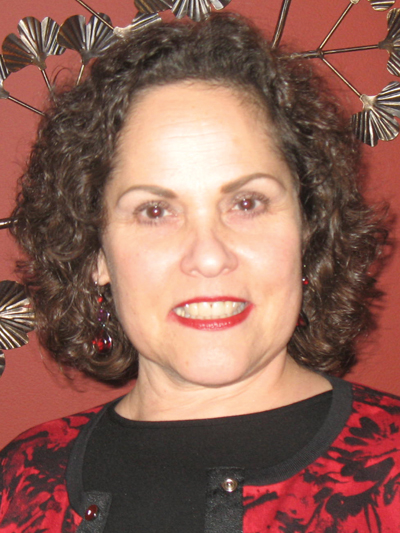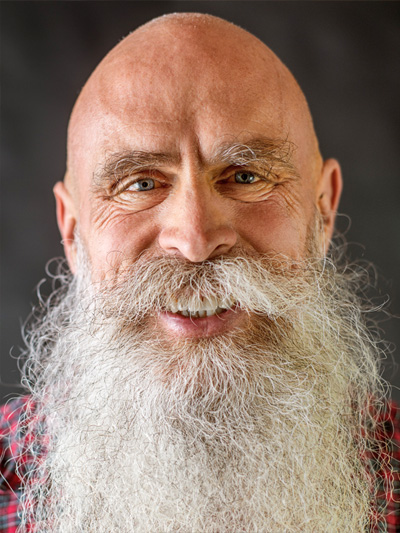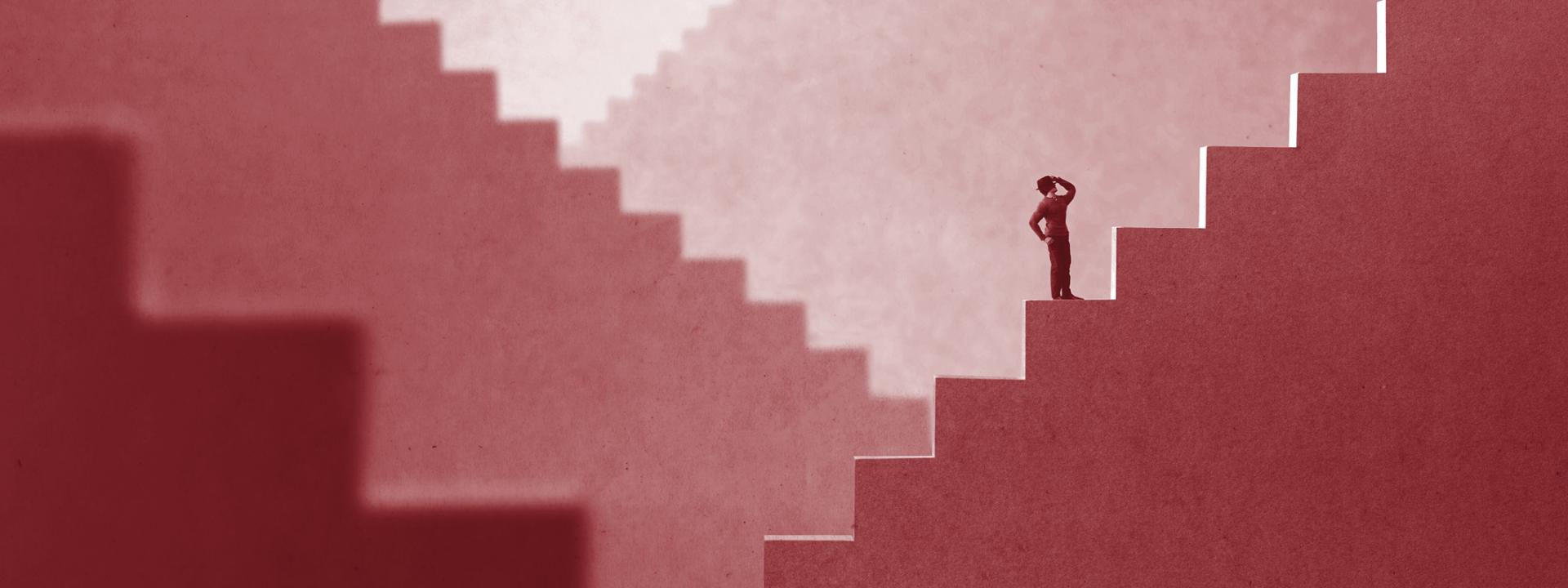Understanding the complexities of HIV and why a cure isn’t coming soon is key to developing strategies for an eventual cure
With more than half a century of advocacy work between them, Lynda Dee and Jeff Taylor have spent the last decade pushing to develop a cure for HIV. They are community advisory board members and community engagement coordinators of the Martin Delaney Collaboratories for HIV Cure Research, an interdisciplinary collaboration funded by the National Institutes of Health comprised of basic, applied and clinical researchers in academia, community, government and industry working together to develop cure strategies for HIV. During an Introduction to HIV Cure-Related Research workshop, Dee and Taylor presented on the complexities of cure research. While an HIV cure won’t be here tomorrow, understanding those complexities will someday lead to cure. But what do we mean when we say cure? Following are excerpts from their presentations. —Rick Guasco
Lynda Dee
The cure has to be scalable for eveyone
We have to say at the beginning that an HIV cure is not around the corner. We don't want people to think that okay, we'll be cured tomorrow. Science doesn't work that way.
What do we mean when we say cure? Does that mean that we’re completely cured—eradication—that HIV is completely gone from someone's body? Or does it mean that HIV is controlled without daily drugs? Can we have the ability to control HIV without taking antiretroviral meds? We'd love to have a complete cure, but that will probably happen gradually, in stages, just like how antiviral therapies were developed. We didn't get to one pill, once a day overnight.
What kind of cure do we want? What are the requirements for a cure? We want it to be safe. We have drugs now that are relatively safe, that are one pill once a day, which is pretty simple. We want to be sure that we keep prices down so that everybody gets a chance to get these drugs, not just rich people or rich countries. An HIV cure has to be scalable. What do we mean by that? We mean that our brothers and sisters in developing countries will also have an opportunity to have these drugs, and the drugs won't be so complicated to make or use that it would be impossible to have access to them. We want the drug to be durable, which means it will work for a long period of time in your body.
Here are the reasons why we need optimized treatments and a cure for HIV. There are about 38 million people with HIV across the world. If people in the U.S. have difficulty accessing treatment, imagine how much harder it is in other countries. Now imagine having to overcome these challenges every day.
There's drug resistance, which means all of a sudden the virus overwhelmed the meds you’ve been taking and now they don’t work anymore. This can happen for numerous reasons. Also, there are toxicities that can develop when you’re taking medications for years, decades—not only for HIV, but for other illnesses and conditions.
If people in the U.S. have difficulty accessing treatment, imagine how much harder it is in other countries.
Why do we need a cure? With HIV comes cardiovascular disease, which means heart attacks, which may result from inflammation caused by HIV. Premature aging and frailty, weaker bones, neurologic disorders and cancer can also occur. You might have developed a certain kind of cancer 10 years later in your life, but you get it earlier now because your immune system is compromised. You have diabetes because maybe you have a propensity to that, but maybe the drugs are causing it to happen sooner. Lipodystrophy, the redistribution of body fat that we’ve also seen affect people's faces, has been caused by HIV drugs. A lot of this is immune exhaustion. We still haven't been able to determine the root causes of a lot of this—whether it's the drugs doing this, or the HIV or if it's a combination of both.
Why do we think a cure for HIV is possible? As of right now, there are five people who have been cured from HIV: Timothy Ray Brown, who maybe many of you have heard of, who was cured but eventually died because his cancer came back, not because of his HIV. Adam Castillejo, the London patient, has been cured. Marc, the Düsseldorf patient, has been cured for about 10 years. The New York patient, who is not yet ready to talk about their experience and the City of Hope patient, who came out at the last IAS [International AIDS Society] meeting. None of them were cured in a way that relates to most people though. They had cancer. They had chemotherapy, cancer treatment that didn’t work for them until they underwent a very risky stem cell transplant operation. Doctors transplanted new immune systems into their bodies, essentially transplanting cells that were immune to HIV.
Timothy’s doctors realized he was cured of HIV as well as cancer by essentially giving him a new immune system that can’t be infected by HIV because he received a different type of CCR5 cell that is resistant to HIV. The key that opens the door to HIV entering his body was removed. This strategy has also been used successfully for other patients with HIV and cancer. We don't know if their cancer will come back, but they have been cured of HIV. Unfortunately, this strategy is not for everyone. The patients with HIV and cancer risked death because cancer was killing them. This is obviously not an option for people who do not have cancer. But the point is, if we can cure people living with HIV who also have cancer, we hope that means we can find a cure for people with HIV, using different strategies, even though it is different and will take us a long time and a lot of research to figure out how to do it.
Jeff Taylor
Finding a strategy to outsmart a clever virus
Why is it so hard to cure HIV? The answer is the reservoir where HIV hides out. If you take your HIV meds, you stand a good chance of becoming undetectable. But that doesn't mean there's no virus in your body. It just means that it's not detectable in your blood. It's still hiding out in all these parts of your body—your brain, your lymph nodes, your stomach, bone marrow and the genital tract. If you stop your meds, the virus comes roaring back. That's the problem that they're trying to solve with HIV cure research therapy.
So, how are we trying to address this? What are we trying to do? There are a lot of different pathways. The first is called latency reversing, which is just a fancy term of saying you're going to wake up the virus. The virus is latent, dormant, asleep. It's not doing anything in your cells because it's suppressed in the bloodstream by the HIV medications that people take. So, the idea here is to wake that virus up, and then find a way to kill it. This is called kick and kill. It sounds a little violent, depending on how you feel about your virus. When the virus is in this dormant state, it gets incorporated or integrated into the blood cells and other cells in your body. The idea is to activate or wake them up, and that way the cells release the virus. Your body, or your medication, can recognize them and kill them. The cells will die, but so will the HIV. One of the downsides of this is that latency-reversing drugs are used in cancer treatment, and they can be really toxic. Another downside is that they don't wake all the HIV up. All it takes is one cell, and once you stop medication, eventually that cell will wake up and start releasing HIV. You haven't really cured HIV.
Another approach is to use your body's own defenses. We all have antibodies that fight different infections, and we have antibodies against HIV. The problem is that HIV is a clever virus. It mutates a lot and and finds ways around the antibodies, just like it did against HIV drugs in the early days when we only had one or two drugs until we developed a cocktail that could stop HIV in various ways and keep it suppressed. It's the same thing with antibodies. What researchers discovered is that there are people whose bodies did a better job suppressing the virus, and they had special antibodies that are called broadly neutralizing antibodies—bNAbs—because they can control more kinds of virus, and now they're combining them.
The bNAbs are taken from those people and are multiplied outside the body in a test tube. They’re put back into people with HIV to see if the right combination of broadly neutralizing antibodies can help suppress the virus. We've had some promise with this, and it may work in two different ways. It could be an effective non-drug therapy for people living with HIV. You would give them this treatment and it might work for a while, and eventually you might have to give them more, because the antibodies don't reproduce in the body. You're always having to administer the bNAbs, just like with a drug, giving people new ones all the time, unless you can find a way to get the body to produce its own antibodies. This will be a continual therapy. It might be considered a functional cure—you might have to take shots every year or so to make it work. But this is an approach that is being looked at both for long-acting therapy and possibly as a cure.
Lynda was talking about the five people who have been cured and so as she said, what they did was they basically gave them a new immune system and gave them new cells that could not be infected by HIV. But as Lynda said, that's not something anybody wants to do. That therapy can kill you. For Timothy and Adam, their cancer treatments were failing them, so it was a risk worth taking. But for the rest of us who were taking our meds and doing pretty well, that's not an acceptable risk.
If we can lock HIV’s DNA from ever being read, you've solved the problem, and people stay healthy without having to take HIV medications.
I always tell people, Yeah, it's great for those five people, but don't try this at home. It's not anything you want to go through. And if you talk to any of them, they will tell you the horror stories of going through chemo and radiation or bone marrow or stem cell transplants. They got sick with something called graft versus host disease that people with transplants get because you're basically transplanting a new immune system into them. There are a lot of problems with this approach.
So, they're trying to find a kinder, gentler way of doing this. What they're doing is trying to modify the cells or the genes themselves to make this happen. There are a couple of ways to do this. One way is ex vivo, which just means outside the body. Cells are taken from someone living with HIV—T cells or stem cells from bone marrow—and they are modified in a test tube in a lab. Those cells are changed so that they cannot be infected by HIV. They're basically immune to infection. These special modified cells are then put back into a person’s body. The idea is that these cells will incorporate themselves into your body, multiply on their own and be resistant to HIV infection. The new cells will take over and form a new immune system. Eventually, over time, these will take over HIV. It works really well except it's really complicated.
I won't go into it a lot but we hear a lot of news about things like CRISPR/Cas9 gene modification. They work like molecular scissors and just take your cells, cut out the parts that allow those cells to become infected by HIV so that it makes them resistant to infection. And then those cells are what are allowed to multiply either outside the body and are reinjected or used with a carrier virus to inject them into the body and multiply on their own and basically replace your immune system.
Another approach is to take advantage of what the the virus already does. What it does is it gets into a cell. And most of the time, as we said earlier, it just kind of stays there, especially if there's not virus multiplying in the blood. So, they have these long-term—they call it quiesced or senescence—cells that basically stay asleep. If you can just keep them asleep, you won't have sickness. You won’t completely eliminate the virus from your body, but it won't do harm. And that's the next best thing. If we can do that, then we can call it a win, if it works effectively. The idea is to keep the cells from multiplying and reading the HIV DNA, because once that happens, the HIV takes over your immune system cells, starts to multiply and then causes infection and that's what makes you sick. If we can lock HIV’s DNA from ever being read, you've solved the problem, and people stay healthy without having to take HIV medications.

Lynda Dee is an HIV/AIDS treatment activist who co-founded AIDS Action Baltimore in 1987 after the death of her husband and two-thirds of her friends as a result of AIDS complications. She has worked for 35 years with academia, industry and government to expedite ethical drug development to provide access to life-saving medications before approval and to ensure reasonable drug prices and increases. She was co-chair of Martin Delaney Collaboratory (MDC) CARE CAB, co-chair of the MDC DARE CAB, co-chair of the amfAR Cure Institute CAB and is now the DARE MDC Community Engagement Coordinator.

Jeff Taylor is a 60-year-old gay man who has been living with HIV for 40 years. He became involved in HIV research as a volunteer for the first AZT trials in 1988, and has been involved in HIV cure research for the past 15 years. He is currently the community engagement coordinator for the RID HIV Collaboratory for HIV cure research.


